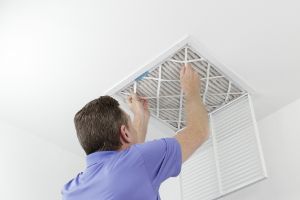
Indoor air quality has increasingly become a pivotal focus for homeowners, school employees, and businesses aiming to ensure the health and well-being of occupants. Tested and proven, the air quality within our indoor environments can significantly influence our daily lives, potentially leading to health problems if not adequately managed.
Given the severity of indoor air quality problems, particularly in scenic but urban areas like Monterey, CA, understanding and taking decisive action to improve indoor air quality after receiving bad test results is important. Whether it’s employing air purifiers, improving ventilation, or monitoring levels of pollutants such as carbon monoxide, the ways to combat poor indoor air quality are numerous but need strategic implementation.
Basics Of Indoor Air Quality
Understanding what constitutes indoor air quality (IAQ) is the first step towards improvement. IAQ refers to the air quality within and around buildings and structures, especially as it relates to the health and comfort of building occupants. Various pollutants can degrade IAQ, including secondhand smoke, volatile organic compounds (VOCs), particulates, and gases like carbon monoxide.
Signs Of Poor Indoor Air Quality
Recognizing the signs of poor indoor air can help identify potential problems before they escalate. Common indicators include:
- Unusual Odors
- Stagnant Air
- Mold Or Mildew Presence
- Health Complaints From Occupants
Importance Of Air Quality Testing
To accurately assess indoor air quality, professional testing is essential. Companies specializing in indoor air quality testing, such as M3 Environmental LLC in Monterey, CA, use advanced technology to detect and quantify pollutants in the air, laying the groundwork for effective remediation strategies.
Strategies To Improve Indoor Air Quality
After receiving poor test results, several strategies can be employed to enhance indoor air quality. These strategies typically involve reducing pollutant sources, enhancing ventilation, and purifying the air.
Reducing Pollutant Sources
- Identify and eliminate or control sources of pollution: This could involve repairing leaks to prevent mold growth or choosing cleaning products that emit fewer VOCs.
- Implement smoking policies: Prohibit indoor smoking to decrease exposure to secondhand smoke.
- Use carbon monoxide detectors: Install these devices to alert occupants of dangerous levels of carbon monoxide.
Enhancing Ventilation
- Use exhaust fans: Especially in areas like kitchens and bathrooms, exhaust fans can help remove pollutants directly from the area.
- Open windows: When weather permits, increasing natural ventilation can significantly improve air quality.
- Consider mechanical ventilation systems: In areas with high levels of pollutants or inadequate natural ventilation, mechanical systems can ensure consistent air exchange.
Purifying The Air
- Invest in air purifiers: Devices that use filters to remove particles from the air can be particularly effective in areas where eliminating sources of pollution is challenging.
- Maintain heating, ventilation, and air conditioning (HVAC) systems: Regular maintenance and filter changes can keep these systems working efficiently to clean the air indoors.
The Role Of Indoor Environmental Quality
Beyond the air itself, the broader concept of indoor environmental quality (IEQ) encompasses aspects like thermal comfort, lighting, and acoustic quality, all of which contribute to the overall comfort and health of building occupants. Improving IEQ can further enhance the well-being of those inside.
Air Quality Problems & Health
Poor indoor air quality can lead to a range of health problems, from immediate effects like irritation of the eyes, nose, and throat to long-term consequences such as respiratory diseases and cancer. Particularly sensitive groups, including children, the elderly, and those with pre-existing health conditions, may be more vulnerable to the effects of indoor air pollutants.
Resources & Support for Improving Indoor Air
Several resources are available to assist in improving indoor air quality:
- Government Agencies: Organizations like the EPA provide guidelines and information on maintaining healthy indoor air.
- Professional Services: Companies that specialize in air quality testing and improvement can offer tailored solutions based on specific problems identified in a home or building.
- Community Support: Engaging with local health departments or environmental groups can provide additional support and resources tailored to specific areas, like Monterey, CA.
Improving indoor air quality is an ongoing process that requires awareness, action, and regular monitoring. By employing a combination of strategies and making informed choices, individuals and organizations can significantly enhance the quality of air in their indoor environments, leading to healthier and more comfortable spaces.
Get Your Air Quality Tested
Taking decisive steps to improve indoor air quality after bad test results not only enhances the immediate environment but also safeguards the long-term health and well-being of occupants.
If you’re in Monterey, CA, and have concerns about indoor air quality in your home or business, reaching out to a dedicated professional like M3 Environmental LLC can provide the expertise and solutions necessary to breathe cleaner, healthier air.





